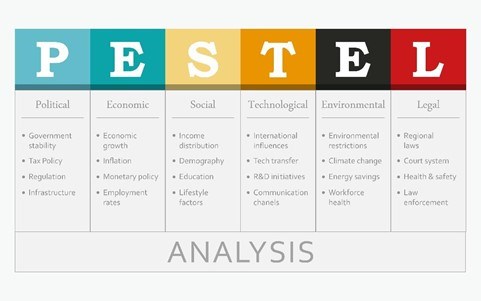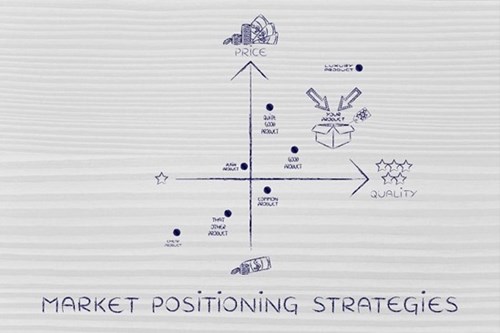Our Visitor Economy expert Gill Harvey explains why discipline and adapting to change are the keys to long-term success - and how your business can avoid being left behind!
Whether you’re nursing your business back to health because of the pandemic, have bravely started a new venture, or are trying to manage the growth that pandemic opportunities may have afforded you, discipline is important. In fact, according to Jim Collins, renowned business guru and author of Good to Great and Built to Last, without disciplined action, every business (no matter shape, size or maturity) is vulnerable in this new world.
Collins’ studies of thousands of global businesses suggests that those most likely to succeed will be ones who understand the need to offer a different and/or superior product or service than those offered by their competitors and who organise all their business activities so that they align with this goal.
The ‘Fine as We Are’ Failure
Businesses that survive the early years generally build and refine, over and over, until they find that sweet spot. However, some business owners make the mistake of achieving some early success and then deciding that they don’t need to refine any further, believing that they’re ‘fine as they are.’ This is when the disciplined action stops. This is hugely problematic.
Perhaps 60 to 70 years ago, the above premise generally would have worked for well-managed businesses. Back then, businesses tended to have on average a 60-year lifecycle from birth to maturity. However, the speed of change in our modern world, which has arguably accelerated even faster through the pandemic, has, according to Marcus Meurer writing for Huffpost, multiplied tenfold. It probably won’t surprise you to learn that globalisation and technology are the main catalysts to this acceleration. Now the average lifecycle of a company is only 10 years, and the companies that do survive beyond this are those that understand the need to continually reinvent themselves.
Globalisation and advances in technology have brought the global population increased access to knowledge, cultures and the freedom of choice. Once people experience new things, it’s unlikely that they will ever accept what came before. I can’t even consider going back to a Nokia 1011 or buying a car without electric windows or power steering. No doubt soon I'll be wondering how I ever coped before my driverless car.
Those that are determined that they are ‘fine as they are’ should check out the fortunes of Blockbuster and Polaroid, once leading companies in their fields and now relegated to the history books because they failed to adapt to changes in public trends, behaviours, and buying habits.
Avoiding the Dreaded Slow Demise
Don’t worry. It isn’t all doom and gloom, and I have some good news for you. Staying ahead of the curve can actually be rather easy. It doesn’t require a crystal ball, but it does require you and your team to take the regular disciplined action to which Collins refers. By "regular," I am suggesting that you undertake a formal review every six months minimum, and not just when there is a downturn in sales or profits. It’s important to be proactive, not reactive.
Here are some steps for you to follow.
Keep an eye on the global environment
We live in a global world, which means we will be affected by global issues and trends. No matter how large or small your business, we are all affected when, for example, exchange rates fluctuate, costs increase due to a shortage in oil, the labour market shrinks due to changes in national agreements, or people’s attitudes to the environment change. It isn’t necessary to be a futurist to see what is coming around the corner. Just be interested in what is happening in the world to pick up on the clues.
Harvard Professor, Francis Aguilar, developed a planning tool in the 1960’s that is still popular with businesses today. Its acronym started as PEST but has evolved into PESTLE. It acts as a reminder to regularly analyse how global elements impact our business.

Observe Your Industry and Competitors
It's always important to know what’s going on in your own industry and amongst your competitors. Otherwise, how do you know you aren’t being left behind? What are the industry associations and press suggesting are the biggest challenges and opportunities right now? Are you set up to weather these and grab a slice of the opportunity pie?
It’s always easier—and usually cheaper—to be a follower rather than an industry leader. However, take the events industry as an example. Those who foresaw the importance of technology in the future of the events industry and had started adapting to virtual events have come through the pandemic in better shape than those who had to start from zero and rapidly upskill when the full implications of COVID-19 became known. Six months in, there were still organisations that were holding out for business to return to normal, hoping that they wouldn’t have to change.
While it isn’t healthy to be so caught up in what your competitors are doing that you lose focus on your own development, it’s relatively straightforward to review your competitors’ offerings and pricing structures to see how you stack up in the market. For example, when I work with businesses in the hospitality sector, I select a reasonable radius around the property (whether a hotel, B&B, pub, café, restaurant, or cottage) and list all other properties within this radius. I then chart these businesses, usually in an Excel spreadsheet, listing their rates, facilities, reviews, and brand image. This allows me to effectively compare the business I’m working with against its direct competitors, taking into account the target market of the business I am supporting. The eventual map will hopefully look something like below, but at least if you do find yourself in a quadrant you’d rather not be in, you can make adjustments to your strategy with constant monitoring before it is too late.

Optimise Your Internal Operations
The final box to tick is ensuring that your internal operations are working as you expect them to in order to deliver what your clients need and expect. If your internal operations are not up to snuff, you can make relatively quick changes by regularly reviewing these standards. This is what we call being agile.
Most businesses use a SWOT analysis (see image below) as a template to review their operations. To be completely objective about your business’s strengths and weaknesses, you should be all over your customer reviews and questionnaires, look to elicit feedback from your suppliers, and engage with your team for honest and constructive information.
If there are any chinks in service, they can be ironed out; this is called continual innovation. Where you are missing valuable skills, you will be able to recruit for them. When you receive major accolades, you can highlight those. In an ideal world, you will be able to use your strengths to maximise any opportunities and minimise any threats you’ve discovered from your PESTEL analysis. Many people underestimate the power of this simple tool, and yet, if handled correctly, it can be used as a great starting point for businesses to look at opportunities for innovation to help your business remain relevant, competitive, and attractive in a fast-changing world.
This level of discipline sadly isn't undertaken by many. How do I know this? Because even pre-pandemic, business failure rates, according to the Office for National Statistics (ONS), show that while 90% of businesses survive their first year—no doubt due to the build-and- refine method—by year five, some 60% of businesses will have failed.
By building strategic marketing planning into the discipline of business operations, the three simple exercises highlighted above become part of the norm for your business. They will be as accepted and revered as month-end accounting and quarterly financial reviews, becoming an integral part in your business planning. The simple act of adopting these practices openly and rigorously is, research suggests, the route to your continued success.
Speak to a Growth Hub adviser
Would you like expert advice to help your business adapt? Fill out this contact form and we'll get back to you about our 12-hours of fully-funded business support.
Recommended reading:
Technology killing off corporations: Average lifespan of company under 20 years (cnbc.com)
The Real Truth About Generational Differences | Psychology Today
10 years after Woolworths' collapse, what can retailers learn? - Retail Gazette
Our world is changing at 10x speed: How to prepare and be the change! | HuffPost
Survey Finds Consumers Crave Authenticity - and User-Generated Content Delivers | Social Media Today
Business births, deaths and survival rates - Office for National Statistics (ons.gov.uk)


